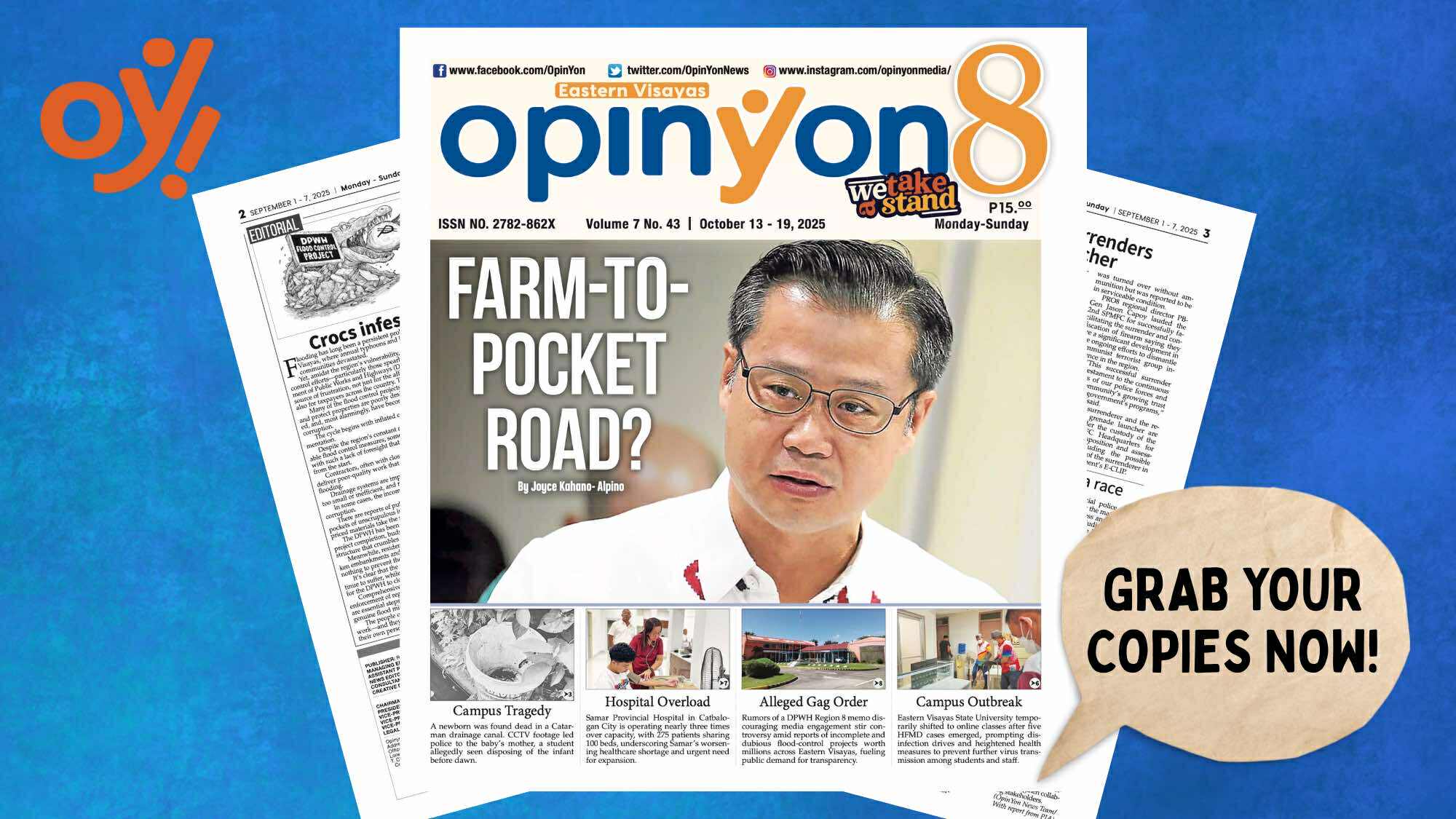What was supposed to be a lifeline for farmers is fast becoming a lightning rod for controversy as a ₱10-billion discrepancy in farm-to-market road (FMR) projects has thrown the spotlight on how public funds are being spent, and whether some of these “development” roads are actually leading straight into private pockets.
The Senate Committee on Agriculture recently unearthed what Senator Sherwin Gatchalian described as “shocking overpricing” in FMR projects across the country, including those in Leyte.
According to Gatchalian, projects implemented in 2023 and 2024 appeared to be overpriced by a staggering ₱10.3 billion. An amount that, at standard cost, could have built roughly 683 kilometers of additional road.
The Department of Public Works and Highways (DPWH) typically pegs the reasonable cost of FMR construction at around ₱15,000 per meter.
But in one case in Tacloban City, a concreting project in Barangay San Roque received ₱100 million under the 2024 budget to cover a mere 287 meters of road.
The math is brutal: ₱348,432 per meter, or more than 23 times the benchmark cost.
Gatchalian called the figures “unacceptable,” urging the Department of Agriculture (DA) and the DPWH to conduct a full audit.
“That’s money that could have gone to hundreds of other kilometers of road, money that farmers desperately need,” he said during the budget hearing.
Agriculture Secretary Francisco Tiu Laurel Jr. has since vowed to review the projects and cooperate with any investigation.
Not all road projects in Leyte tell the same story. In La Paz, a newly completed 578-meter FMR linking Barangays Catalyan and Bagacay West cost ₱14.8 million, a figure consistent with standard estimates.
In Ormoc City, the DPWH also finished a 1.6-kilometer concrete road connecting Barangays Manlilinao and San Sebastian for ₱96.4 million, while in Matalom, the Department of Agrarian Reform (DAR) rehabilitated two rural roads under its ARCP-II program for a combined ₱18.6 million.
These more modest projects are credited with cutting travel time and reducing post-harvest losses for farmers.
In Matalom, residents say they can now transport goods to town markets even during heavy rains. A marked improvement from the muddy, impassable roads they endured for years.
The stark difference in cost between these roads and the Tacloban project has reignited questions about transparency, oversight, and value for money in infrastructure spending.
Analysts note that while higher costs may sometimes be justified by difficult terrain or the need for slope protection, a 2,000-percent markup defies engineering logic.
“Unless the road is made of gold, there’s no way it should cost that much,” a local private engineer said.
The scandal underscores a recurring weakness in local project implementation: lack of detailed cost validation and insufficient coordination between agencies.
With multiple implementing bodies, from DA to DPWH to local governments, responsibility often gets diluted, leaving ample space for cost inflation and political interference.
Senator Gatchalian has proposed setting firmer benchmarks and publicizing all FMR contract details to ensure transparency.
He also floated the idea of assigning an independent body to monitor FMR implementation, saying that “every peso must translate into real, concrete benefit—literally.”
For Leyte farmers, the stakes could not be higher. Farm-to-market roads are supposed to connect harvests to buyers, villages to towns, and progress to the countryside.
But if cost inflation continues unchecked, the promise of these projects may crumble beneath layers of cemented corruption.
As the Senate probes deeper, one uncomfortable question lingers: Are these roads truly built for farmers or for someone else’s wallet?
If the goal is to bridge the distance between the field and the marketplace, the government must ensure that every kilometer of road brings farmers closer to opportunity, not poverty.
Because when farm-to-market roads turn into farm-to-pocket roads, it’s not just taxpayers who lose, the nation’s food producers pay the highest price.
#WeTakeAStand #OpinYon #OpinYonNews #DA #DPWH
